Celebrating the Centennial Organ
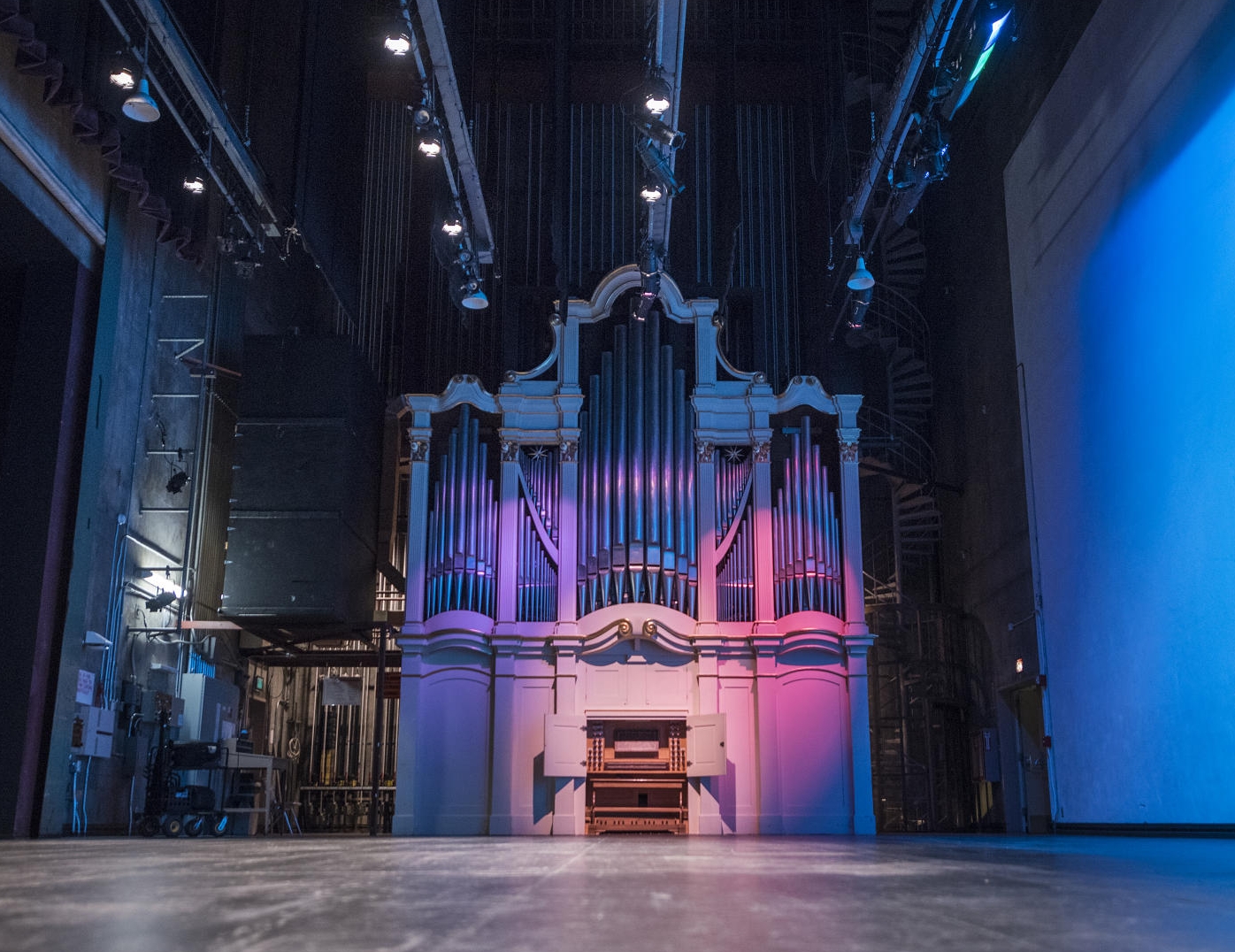
The pipe organ, also known as the centennial organ, in Harlen Adams Theatre was built between the years of 1984 to 1988, seen on Monday, March 12, 2018 in Chico, Calif. (Jason Halley/University Photographer/CSU Chico)
Its keyboard was made from shin bones of cows from University Farm. Wood for its pedal board and bench came from the famed Hooker Oak. And sculpture students built its pipes by melting down tin and lead.
For nearly 30 years, the Centennial Organ at Chico State has been a treasured piece of campus and community history, while also serving as a learning tool and mechanism for music. Its rich sounds and creation story have delighted listeners young and old alike.
Now, it’s looking for a new home—and the University is hopeful it will find a place in the greater community. That way, it can stay close to its roots while getting the play it needs and deserves.
“This isn’t just a piece of Chico State history. It’s Chico history, and we are doing all we can to find a home for it where our students, faculty, and others can enjoy it,” said Tracy Butts, interim dean of the College of Humanities and Fine Arts. “The organ’s origins are a testament of the ways the campus and community can partner together, and a move back into the community cements that bond.”
The University looks forward to celebrating the organ’s last year of performance throughout 2019–20 and honoring what a treasure it has been during its tenure. Tickets are still available for this weekend’s Glorious Sounds of the Season, where the organ will accompany festive performances by students and faculty, and it will be played again during the Bach Festival in March.
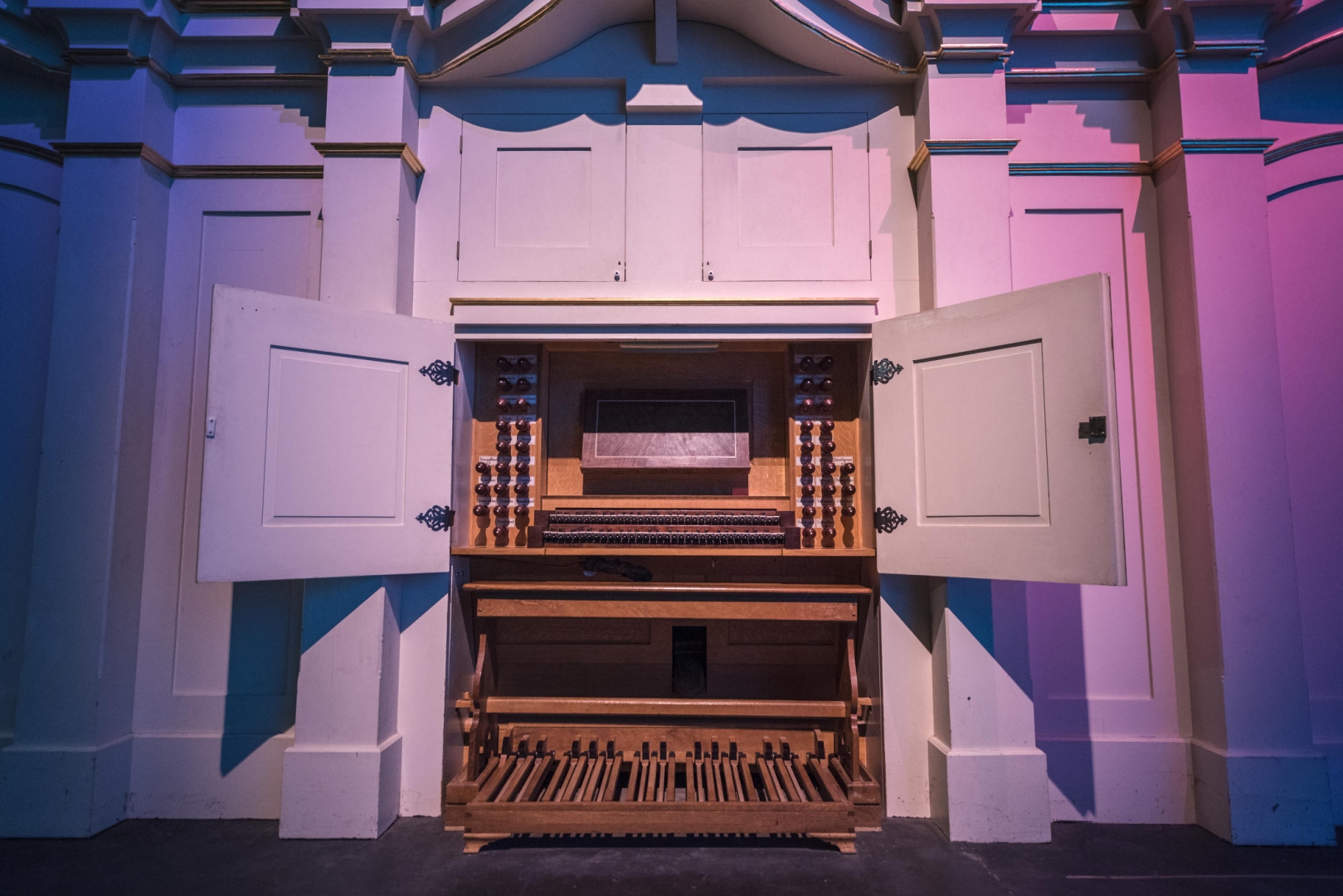
Retired music professor David Rothe, who is credited with the vision to bring the organ to reality decades ago, will again be at the keyboard this weekend, delighting in its great range in pitch, which ranges from the edge of human hearing to just 16 cycles per second. As someone who has continued to play the organ annually since his retirement in 2008, he knows its majesty by heart.
“You don’t hear it so much as feel it,” he said.
The organ also has a dynamic range of 36 stops, which provide for a mathematical combination of hundreds of thousands of different sounds, “an entire palette of colors,” Rothe said, adding that playing it is “the greatest feeling in the world.”
“It’s not just a musical instrument,” he said. “It’s a work of art.”
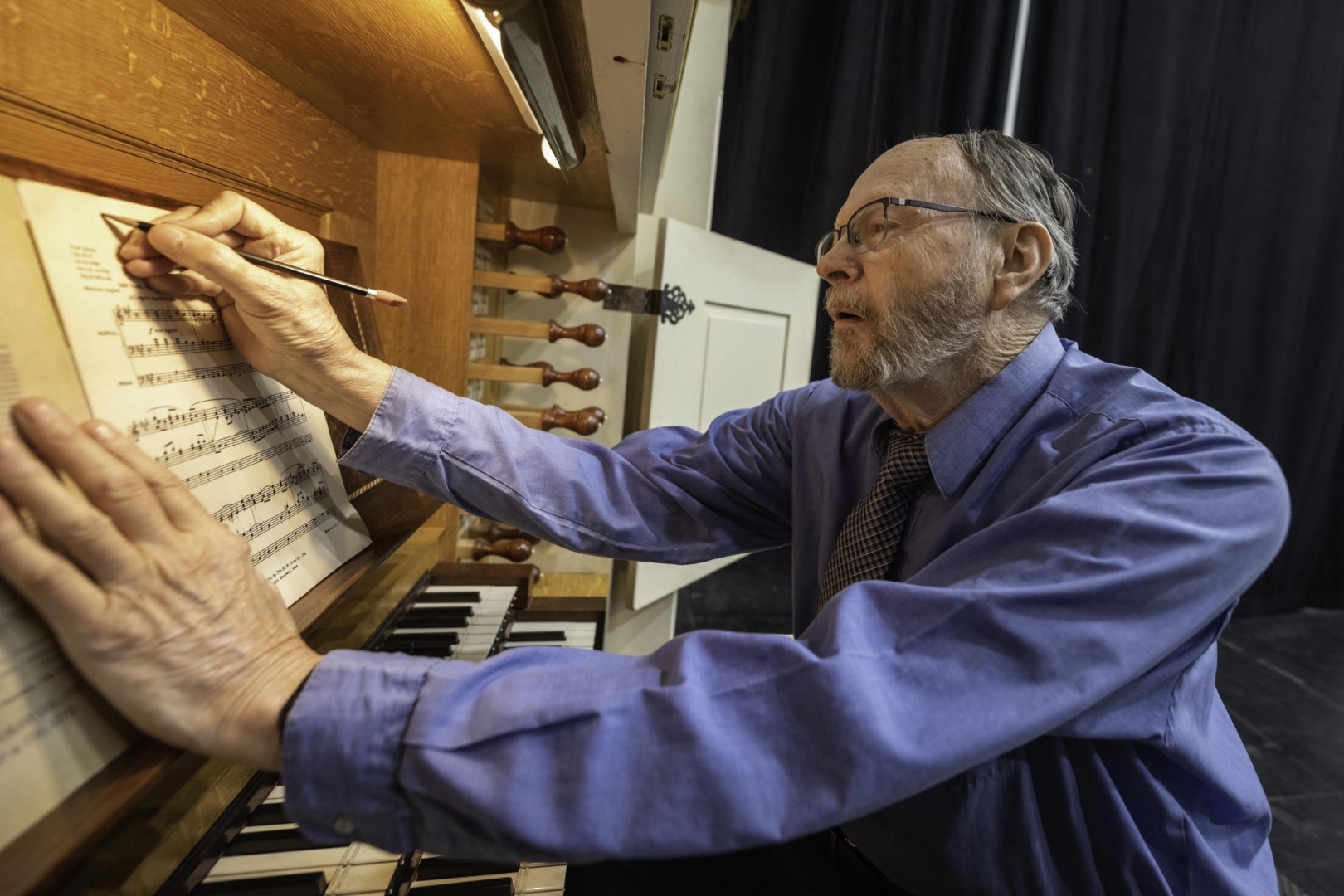
The Centennial Organ, so named because of its construction during the University’s 100-year-anniversary, has graced the stage of Harlen Adams Theatre since the late 1980s. Unfortunately, its placement created safety risks by blocking the line of sight between the stage and pulley system for raising and lowering equipment such as lighting and backdrops.
For years, a verbal relay system has helped coordinate movements and no one has been hurt. However, the system continues to pose a real and serious danger to students, faculty, staff, and guest performers, Butts said. The college’s safeguards are not sufficient for the Department of Music and Theatre’s accrediting body, jeopardizing students’ degrees, and the National Association of Schools is requiring a plan to address the safety issue be in place by February 1, 2020 to maintain accreditation.
The University has considered all options to keep the organ on campus, but given its size and other constraints, none are viable, Butts said. Asbestos in Laxson Auditorium make that location off-limits, and the instrument cannot move to the back of the current theatre stage because it would require removal of a load-bearing wall and impact theatre programs by intruding into the theatre shops.
Rothe has always known its location may be in jeopardy. After all, its original placement in Harlan Adams Theatre was intended to be temporary, until a better home could be designed. Regardless, he was deeply disappointed to hear its time on campus would finally come to an end.
The Centennial Organ’s existence at Chico State has always been a point of pride for him. He played his first organ at 14 years old and was accustomed to playing grand organs during his undergraduate and graduate studies, so when he came to Chico State College to teach music in 1968, he quickly began working to get a world-class instrument on campus.
He and famed organ builder Munetaka Yokota hatched a plan to build an organ as the instruments were constructed centuries ago. While modern organs were designed to specifications, built elsewhere, dismantled, and eventually reassembled at their permanent homes, the Centennial Organ would be built on site at Chico State.
Yokota worked as an artist-in-residence on campus from 1984–90, with student, faculty, and community volunteers as his assistants. He trained them in centuries-old techniques in the style of the great organs played by JS Bach. The completed Centennial Organ features 2,200 pipes, stands 27 feet high and 20 feet wide, and weighs 12,000 pounds.
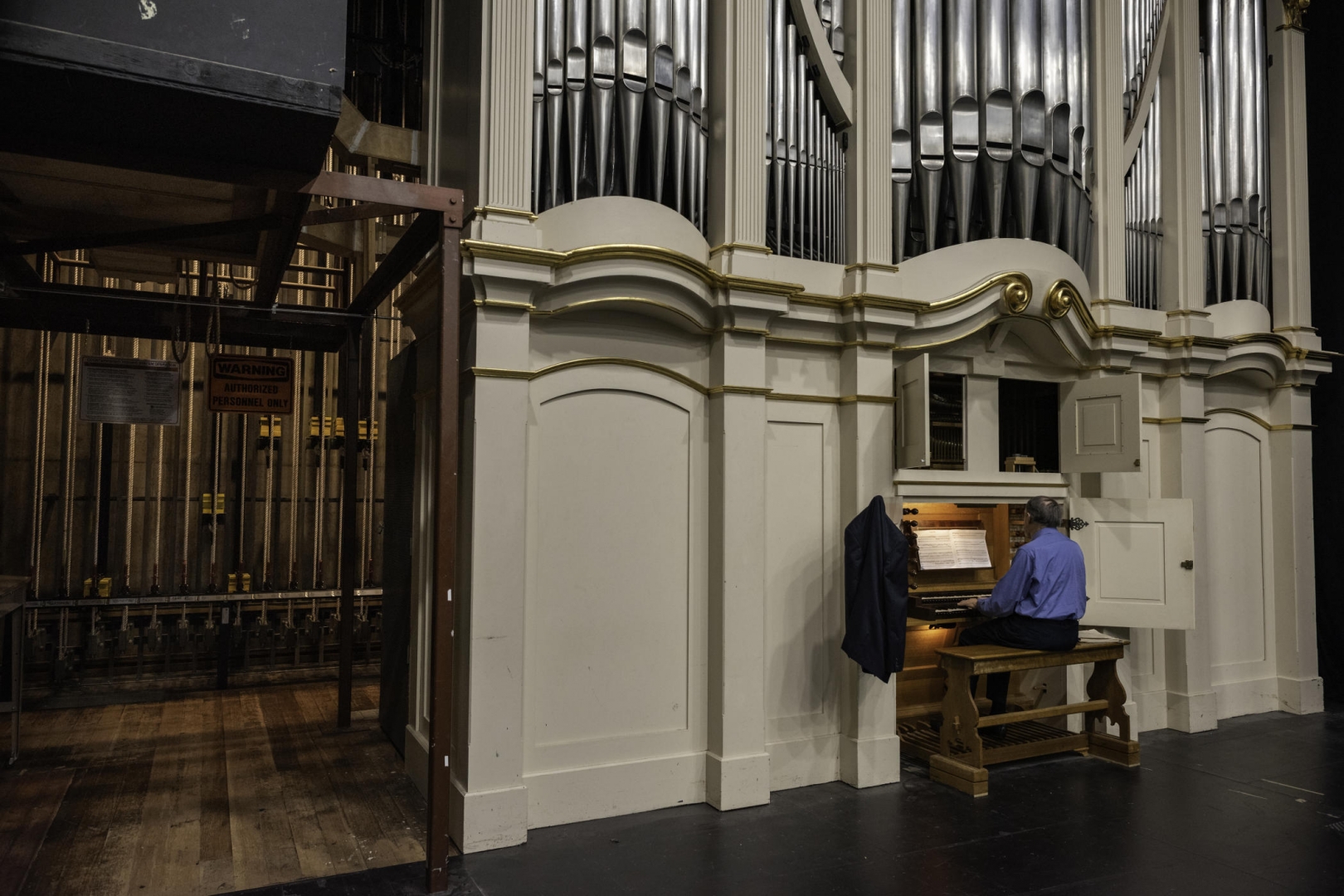
While news about the organ’s need for removal has generated rehoming offers from Chicago to Ireland and the Czech Republic, Butts said such a relocation would be the ultimate last resort.
She and Rothe both remain hopeful a local church or another community venue may want it. Butts is open to all ideas and is pursuing several promising leads.
“This is an opportunity for the organ to experience something of a rebirth,” she said. “Not only do people who have been longtime fans get to see it preserved locally, but it’s an opportunity for the organ to gain a whole new generation of fans, for people who would never otherwise have known about its existence or had the chance to see it.”
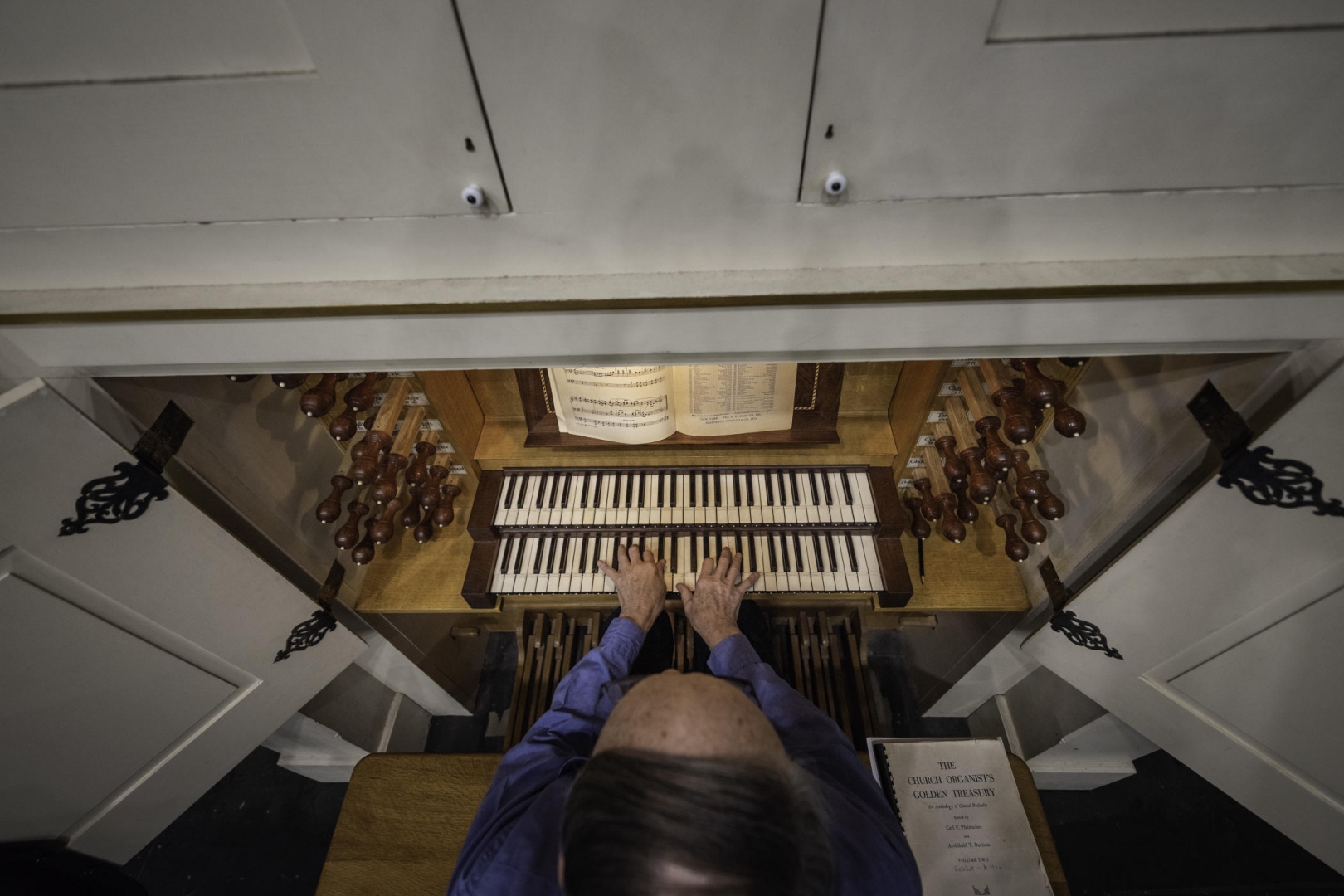
A new home, Rothe said, also will allow the organ to be played to its true potential.
“The organ more than any instrument depends on the space it is in for its sound,” he said. “In a big space with hard surfaces, it has room to bloom.”


